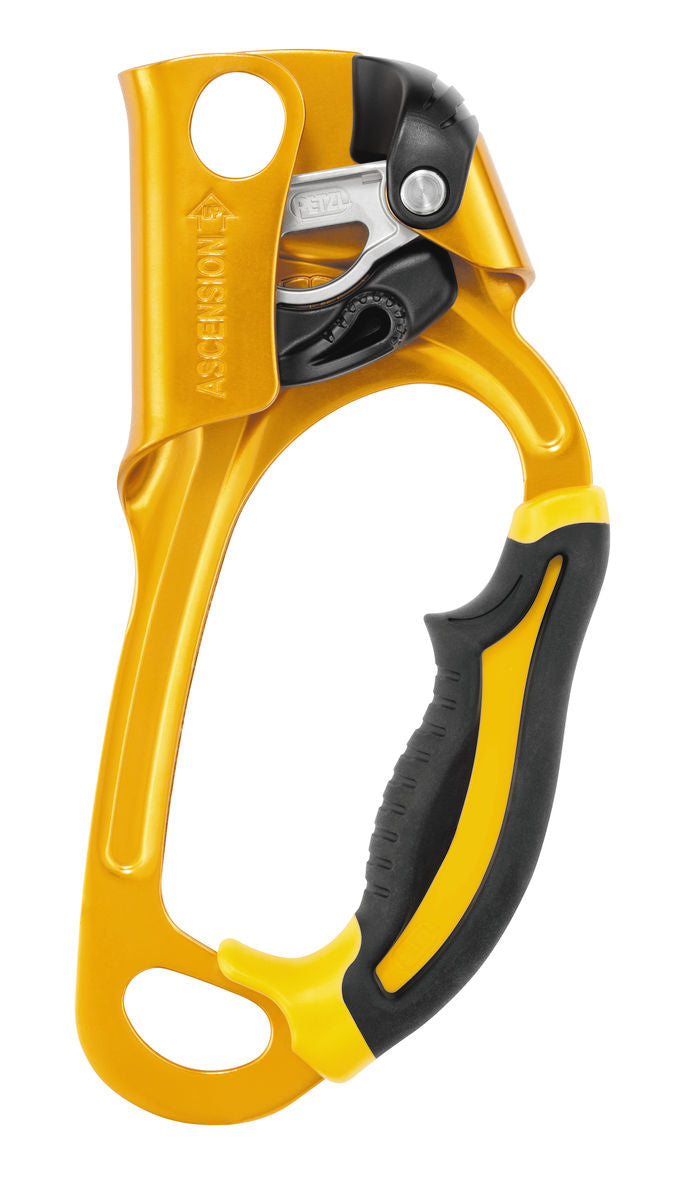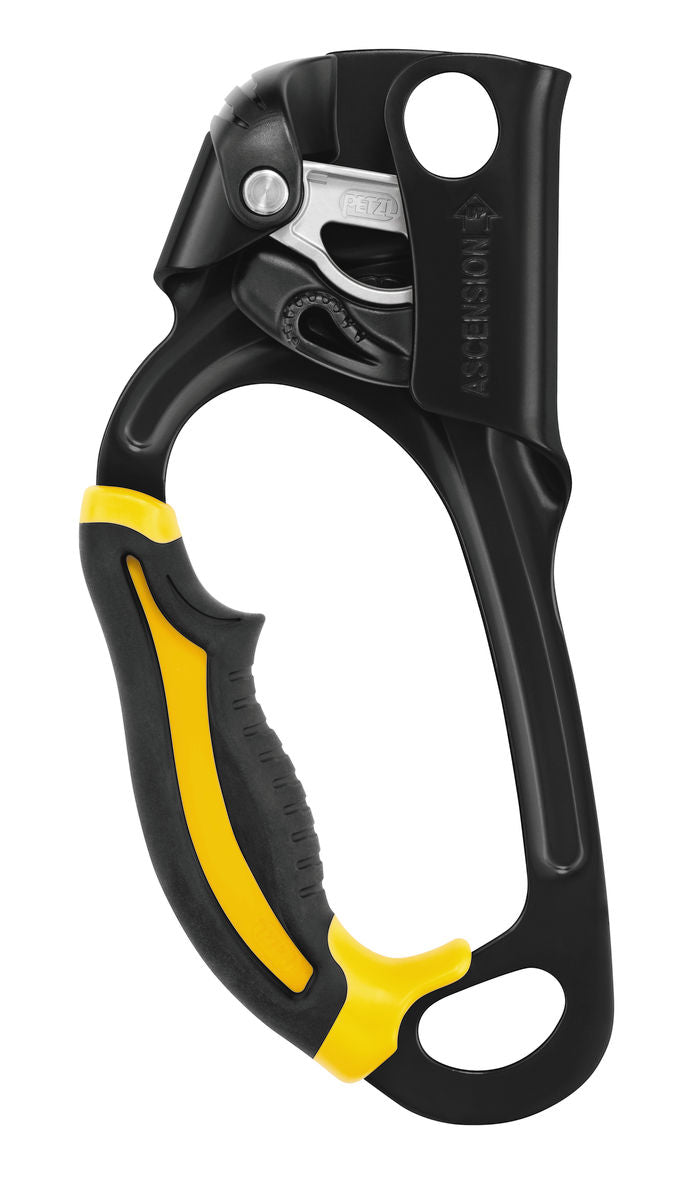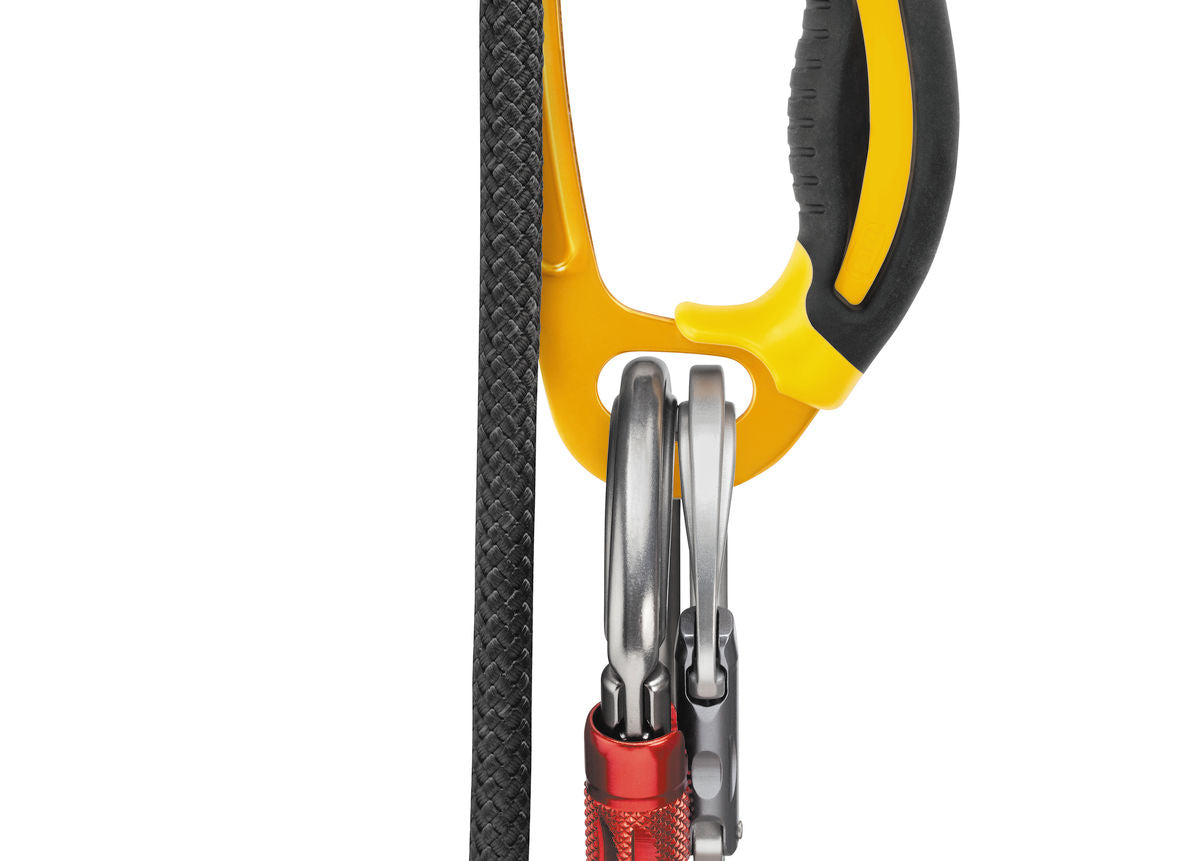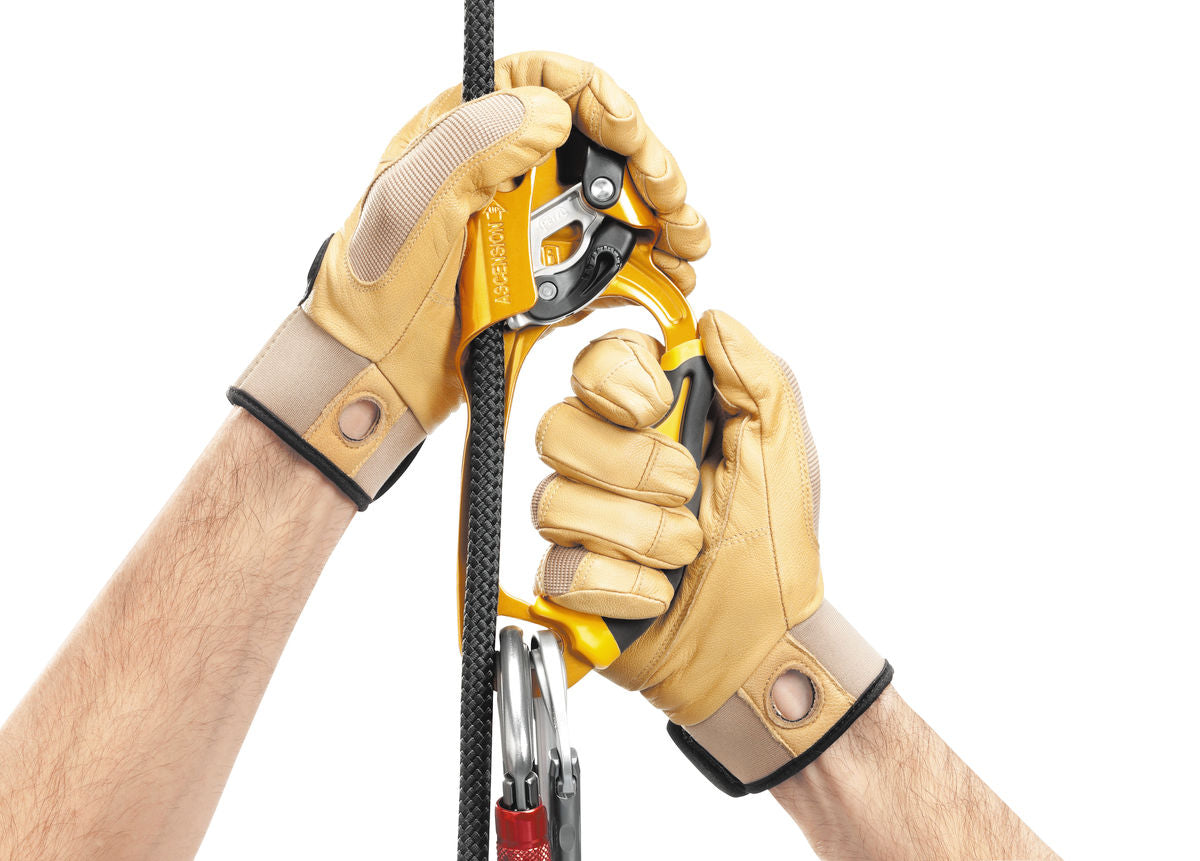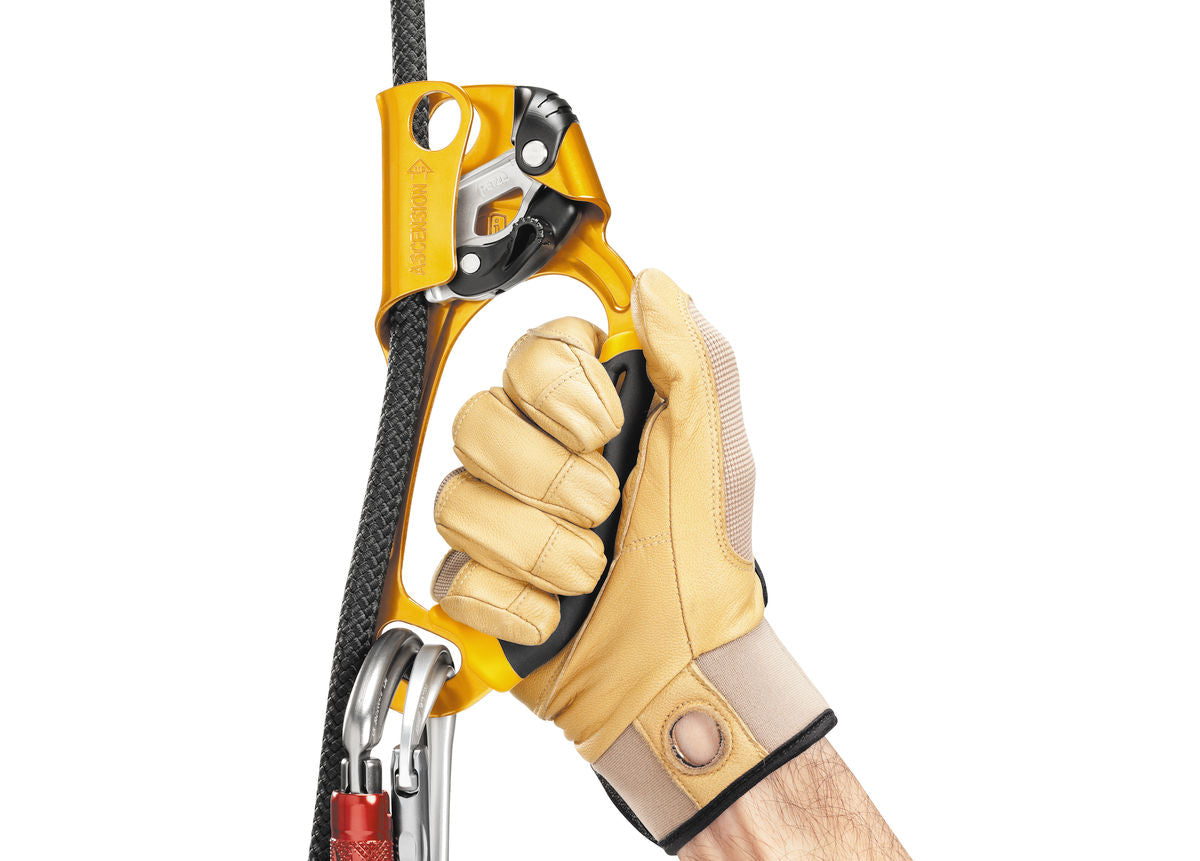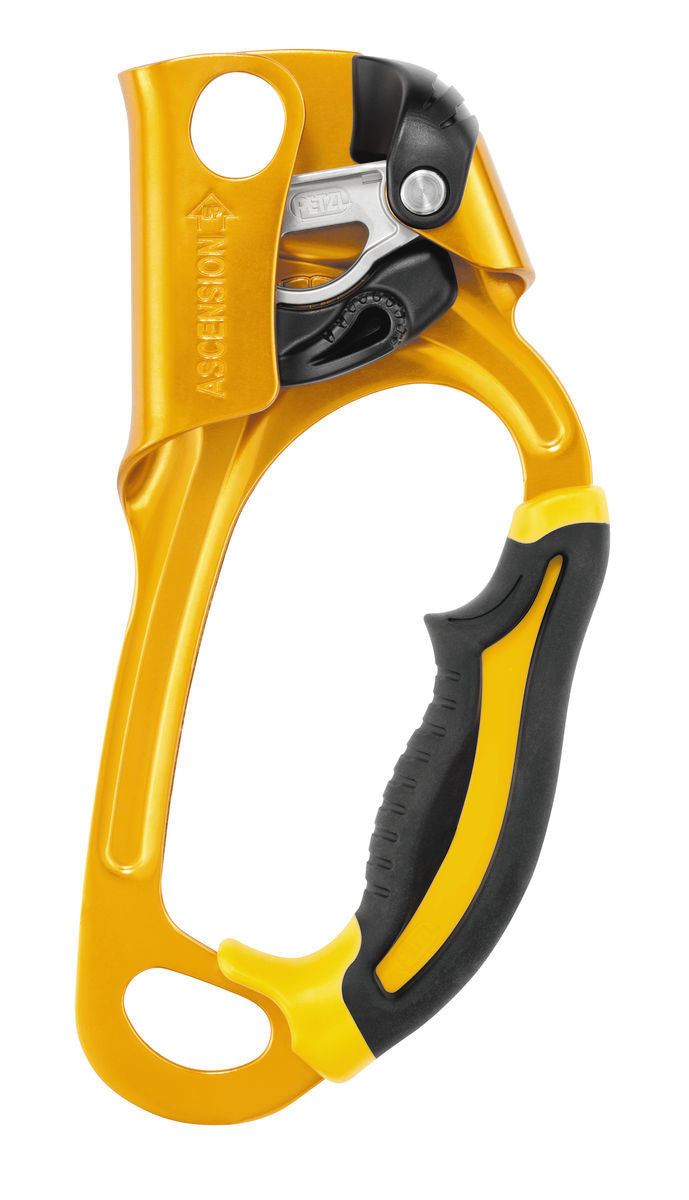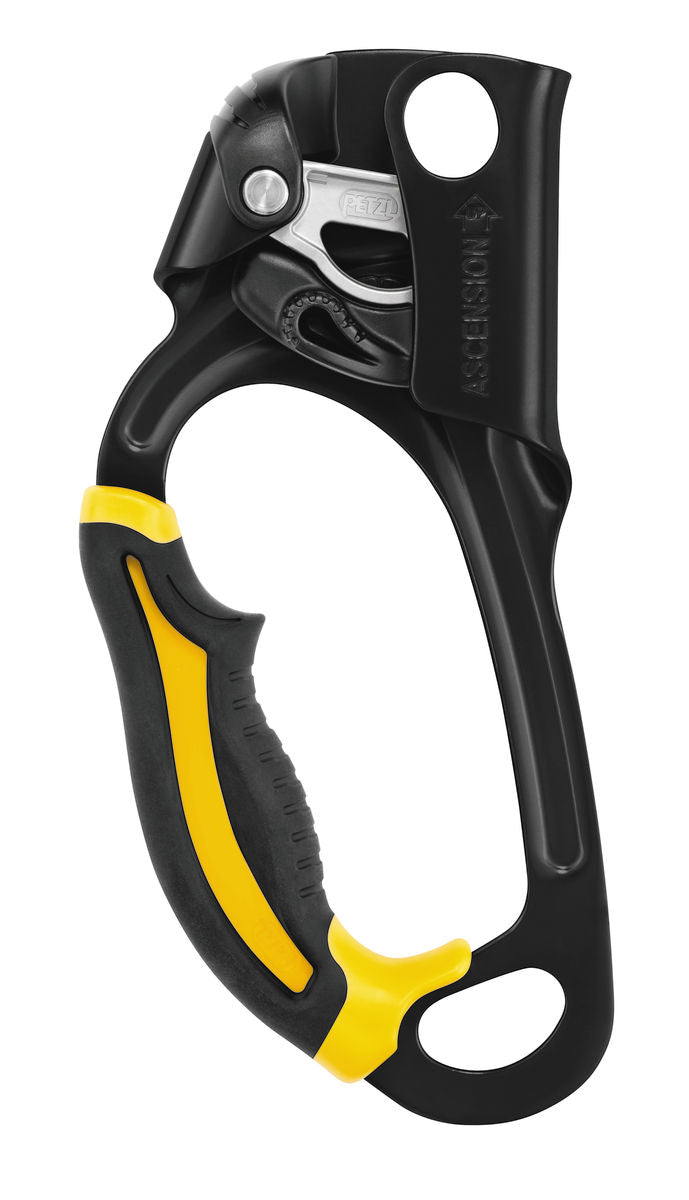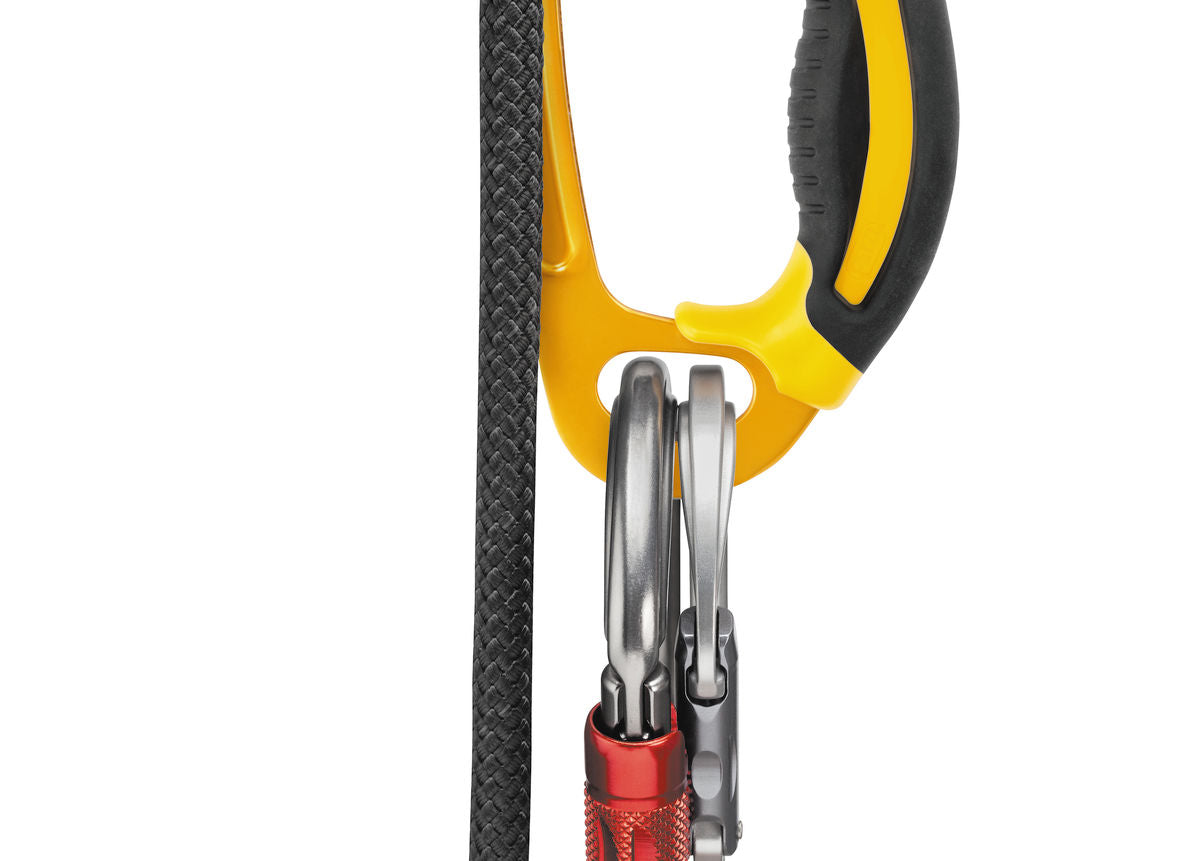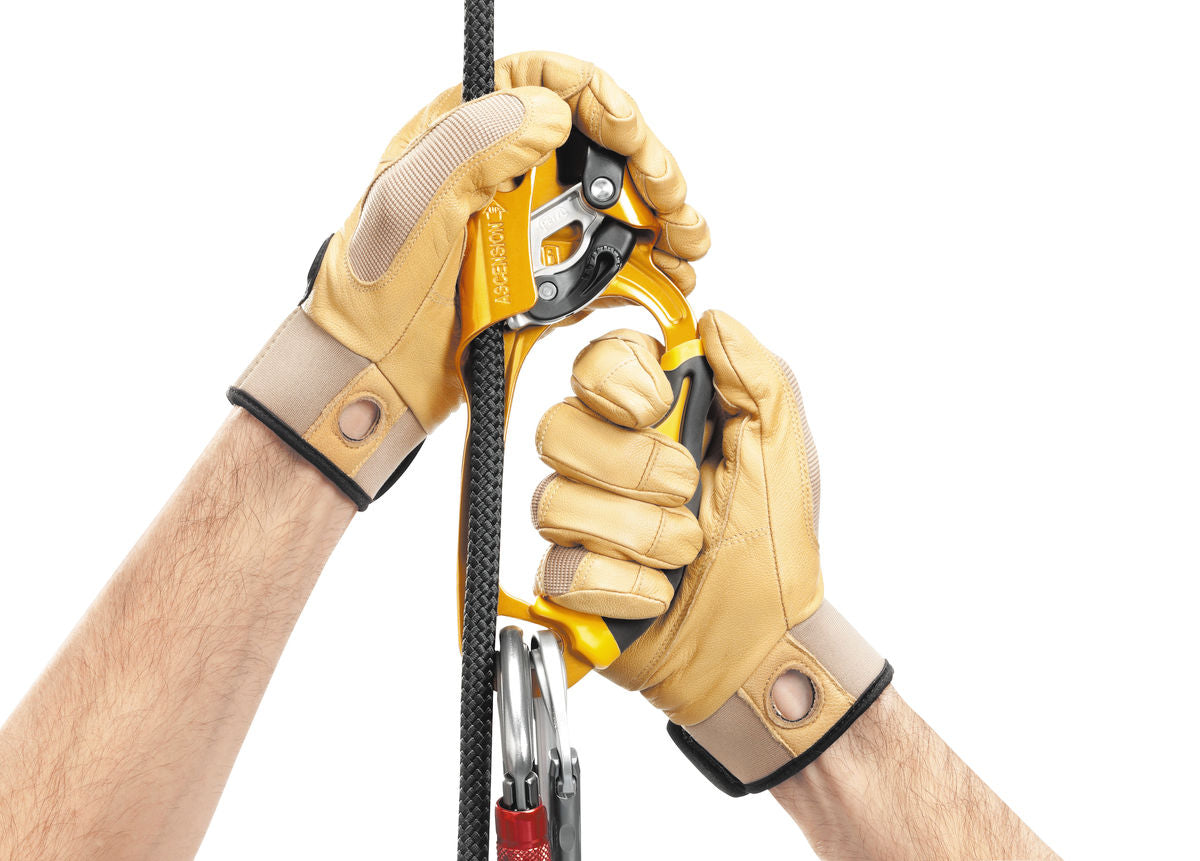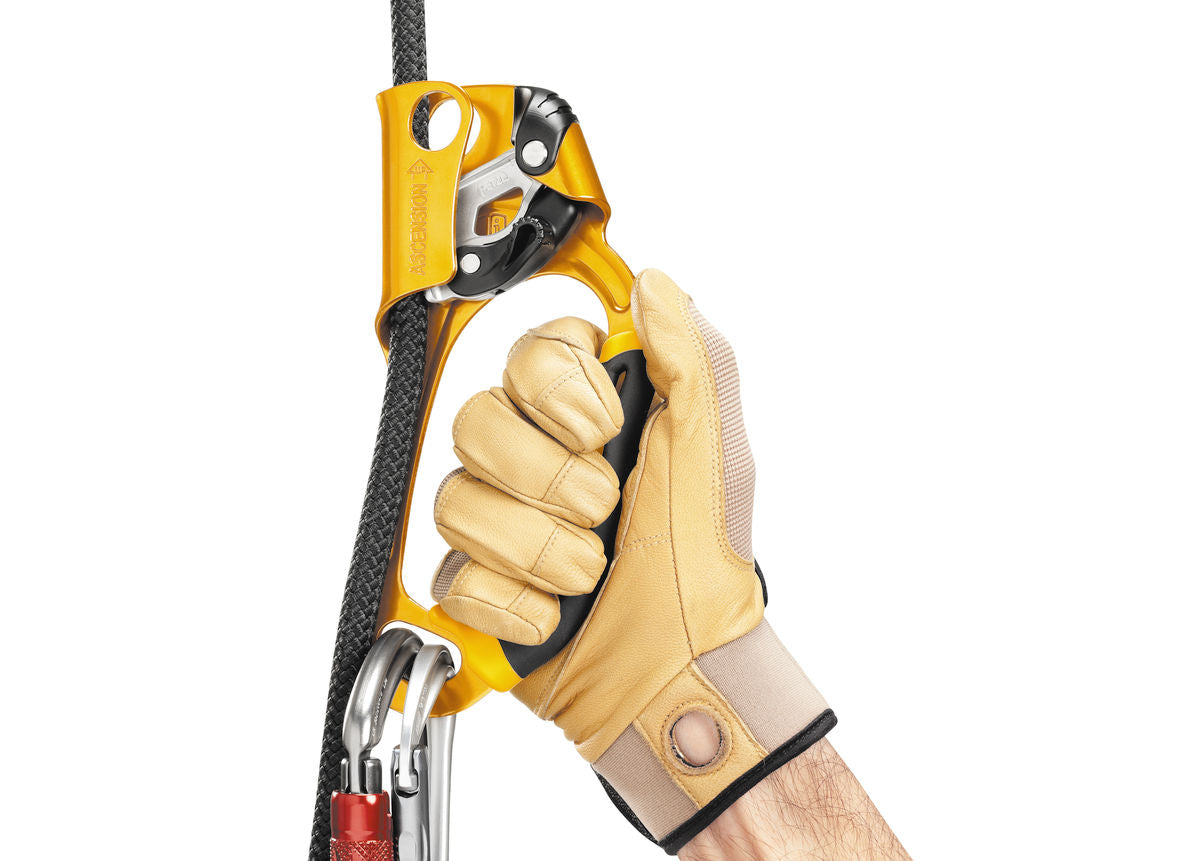Skimo.in
Petzl ASCENSION
Petzl ASCENSION
Couldn't load pickup availability
The Petzl Ascension Ascender is the ultimate tool for serious climbers.
Offering exceptional performance, lightweight design, and unmatched reliability.
Redesigned from the popular blue and yellow models that have been favorites for years, this new version continues to uphold Petzl's reputation for quality and innovation.
Key Features:
- Ergonomic Grip: The newly designed ergonomic grip features a space for the index finger and a wide base, ensuring your hand stays securely in place during use.
- Enhanced Compatibility: The widened lower hole allows for the attachment of two carabiners, providing greater versatility and ease of use.
- Vivid Colors: With a bright yellow right-hand ascender and a shiny black left-hand ascender, you'll easily spot them in your gear.
- Smooth Operation: This ascender excels at sliding smoothly up climbing ropes, minimizing catches and ensuring efficient movement.
- Icy Rope Performance: The aggressive teeth are designed to grip icy ropes effectively, making it a reliable choice in challenging conditions.
- Lightweight: One of the lightest ascenders on the market, it reduces the burden on your gear setup without compromising on performance.
-
Versatile Use: Can be used for self-belaying, similar to the Petzl Mini Traxion. While the Mini Traxion is superior, the Ascension ascender is a capable alternative in a pinch.
Detailed description
Description
- Designed for ascending a rope
- Simple to use and effective:
- Ergonomic molded handle allows a comfortable yet powerful grip
- Wide opening allows the handle to be easily grasped, even with thick gloves
- Ergonomic upper part maximizes power when pulling with two hands
- Safety catch is totally integrated into the body of the ascender to help prevent snagging
- Toothed cam with self-cleaning slot optimizes performance under a variety of conditions (such as frozen or dirty ropes)
- Wide lower hole allows the carabiners of the CONNECT ADJUST lanyard and FOOTAPE or FOOTCORD foot loop to be easily attached
- Upper hole for clipping a carabiner around the rope
- Available in left-handed and right-handed versions
Specifications
- Material(s): Aluminum, stainless steel, plastic, rubber, nylon
- Weight: 165 g
- Rope compatibility: 8 to 13 mm
- Certification(s): CE EN 567, UKCA, UIAA, NFPA 2500 Technical Use
Q. What’s the Difference Between the Right- and Left-Handed Versions of the ASCENSION Handled Ascender?
To optimize ergonomics, Petzl offers two models of the ASCENSION ascender: one for left-handed users and one for right-handed users.
Operating Principle:
- The functionality is identical for both models.
- If the notched cam can be operated with the right thumb, it’s a right-handed model.
- If the notched cam can be operated with the left thumb, it’s a left-handed model.
Choosing Between Models: There are no strict rules for choosing between the two ascenders; it ultimately depends on personal preference. Some users prefer the left-handed ASCENSION for rope climbing, while others favor the right-handed model.
Q. Using only one ascender?
One ascender is not trustworthy; it is recommended to use two ascenders together and/or to use a backup belay system.
Differences between a chest ascender and an ascender on a lanyard
Chest ascender
The chest ascender is connected directly to the harness without extension. Its stable position allows for good rope glide.
The user takes care to avoid creating a loop of slack when progressing, thus maintaining a low potential fall length.
Ascender on a lanyard (or progression ascender)
A lanyard offers more freedom of movement to the user, who can mistakenly find themselves above their ascender or with a slack lanyard. This creates potential for a fall. As with the chest ascender, one must also monitor the tension in the rope between the ascender and the anchor. Any loop of slack is dangerous.
The ascender standards partially cover the risk of falling on a slack lanyard.
The EN 12841 type B standard (ascenders for work): fall test on a dynamic lanyard, ascender on a semi-static rope at 1 m from the anchor. Test with the mass engraved on the ascender (140 kg for ASCENSION, BASIC, CROLL on compatible rope diameters greater than 10mm).
EN 567 standard (ascenders for sport): no fall test.
Petzl's internal testing complement the requirements of the standards by being based on realistic usage scenarios.
These tests ensure that the ascenders do not tear the rope in the most unfavorable conditions (fall of the length of the lanyard, 1 m from the anchor, 80 kg dummy, ropes of compatible diameters).
3. Different modes of ascender use
Rope ascent
The user is hanging on a progression rope.
The recommended rope ascent system includes a chest ascender (CROLL) and an ascender on a lanyard (BASIC, ASCENSION).
As a single ascender is not trustworthy, it is recommended to use two ascenders, both attached to the harness.
Progression along a fixed rope
The user is on their feet, using one or more ascenders for self-belay and as an aid to progression.
The user has their hands free to slide the ascenders along the safety rope, while always keeping it taut.
If there is a low probability of a fall, using one ascender is possible; the rope must always stay taut between the ascender and the anchor.
Self-belayed climbing
The user is focused on climbing, belayed by ascenders that follow their progression. The user does not have their hands free to manage ascender position and rope tension.
A fall is likely in this technical climbing situation, so it is recommended to use two ascenders attached to the harness.
This particular ascender use situation is detailed here: http://www.petzl.com/fr/outdoor/product-experience/auto-assurage/introduction
Share
